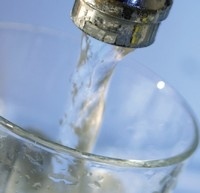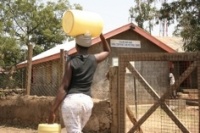Solar disinfection of water — or SODIS — essentially involves putting water in plastic bottles and exposing them to sunlight for six hours, using the sun’s natural thermal and UV effects to kill contaminants.
With a few basic deployment guidelines, it is highly effective and as such is used regularly by approximately 4.5 million people in the developing world and is promoted by the World Health Organization (WHO).

Nevertheless, as project lead Dr Anthony Byrne of Ulster noted, the simplicity of the approach also leaves it open to flaws.
‘The effectiveness of the process is dependent on a number of environmental parameters such as latitude, time of day, atmospheric conditions, the initial water quality, turbidity, level, and nature of the bacterial contamination… and you’ve no indication if the process has actually been effective,’ he told The Engineer.
Byrne’s team has been working for 10 years on ways of improving the process and scaling it up with simple reactors for households or small communities. Specifically, it has been looking at how various nanoparticles might augment SODIS through a process called photocatalysis.
He said: ‘We typically use titanium-dioxide, but a lot of different materials will act as what we call wide-band semi-conductors. Basically if you shine light on these materials you can excite them and you get charge separation and this can lead to the generation of radicals and reactive oxygen species, which are responsible for the killing of bacteria and the degradation of organic pollutants in water.’
Since having the nanoparticles in suspension requires post-treatment separation and recycling of the catalyst, the team has been focused on using immobilised material as films, rods or glass beads incorporated into the water vessels.
In addition, it has been developing UV dosimetric indicators to give a better idea of whether SODIS has been effective. A prototype system uses methylene blue, which is photocatalytically reduced to colourless leucomethylene blue and the rate of decolouration is dependent on the UVA intensity. In the dark and in the presence of oxygen, the reduced form is reoxidised back to methylene blue.

Having performed field studies in Kenya and India, the design of devices and reactors is a consideration — with efforts to scale up the process with solar collectors and tube systems but without making it overly complicated and onerous for the users.
Byrne said: ‘There are huge numbers of people living in rural areas of India, Africa and South America who are drinking water that’s potentially contaminated with pathogens, and one way to make the water safer is to employ photocatalytic solar disinfection of water.
’But I don’t think it can address problems they face in the huge slum areas where sanitation should be the priority — that’s a large-scale civil engineering task.’





Swiss geoengineering start-up targets methane removal
No mention whatsoever about the effect of increased methane levels/iron chloride in the ocean on the pH and chemical properties of the ocean - are we...